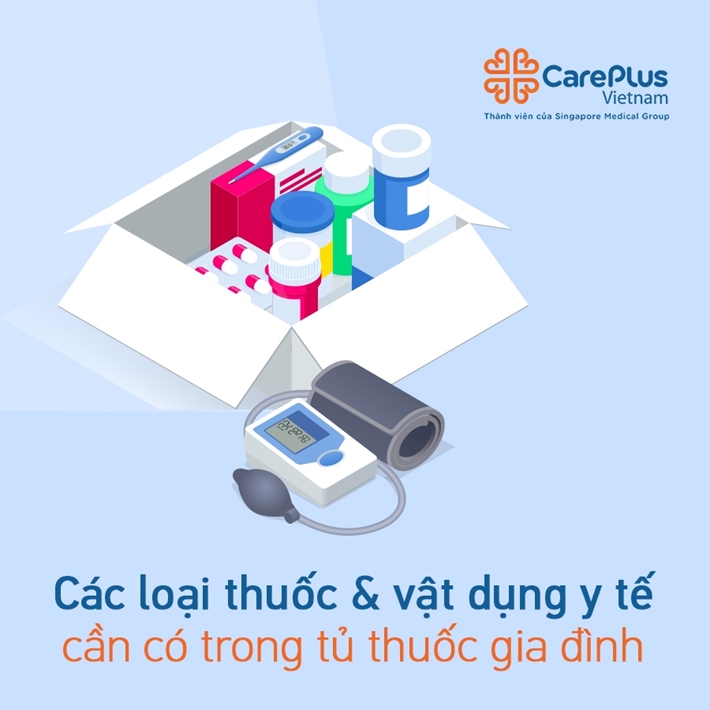Medicines and must-have items in your medicine cabinet
Every family should have a medicine cabinet but what to prepare appropriately? CarePlus will suggest to you the essential supplies.

10/22/2020 9:11:32 AM
MEDICINES TO HAVE
1. Antipyretic and anti-inflammatory medicine:
-
The common is Paracetamol (Tylenol, Hapacol, Efferalgant) or Ibuprofen, Mobic.
-
Reserve tablets for adults and powder for children
-
When using antipyretics, be careful of the dose because an overdose can cause poisoning. Shouldn’t combine much antipyretic medicine during a fever.
2. Analgesic:
-
Paracetamol or Alexan.
-
Salonpas, pain relief patches.
-
Hot and cold compresses relieve abdominal pain, swelling, and fever.
3. Digestive medicine
-
Oresol used to rehydrate in case of diarrhea (mixing ratio correctly to avoid poisoning).
-
Motilum M used for flatulence, indigestion.
-
Smecta, Becberin used for diarrhea.
4. Dermatological medicine:
-
Reserve Pantenol in the form of topical cream or spray. Using Pantenol immediately after a minor burn helps the burn not blister.
-
Eurax grease used for mosquito or insect bites.
-
Antiallergic medicine such as Loratadine tablets or syrup (for children) used for acute itching or urticaria.
5. Insecticide:
-
Alcohol 90 ° to disinfect skin wounds
-
Betadine: disinfect the skin against skin lesions such as mild abrasions or bleeding, abrasions on the lip and oral mucosa, against infections.
-
Hydrogen peroxide: wash new wounds
6. Physiological saline:
Reserve about 4-5 bottles to use in the following cases: Clean eyes and nose daily after go out, swimming; in case of common cold or fever virus, or during epidemic outbreaks; wash eyes when foreign objects (dust particles, insects, sand) get into.
MEDICAL SUPPLIES TO HAVE
1. Thermocouple: Measure the body temperature. Temperature is important for an accurate diagnosis of the fever.
2. Blood pressure monitor: It’s indispensable if there is an elderly or someone with blood pressure & heart disease.
3. Cotton, medical gauze: Clean and bandage the wound. Pre-cut (with clean scissors) into pieces for convenience.
4. Clean scissors: Cut cotton, bandages, and gauze.